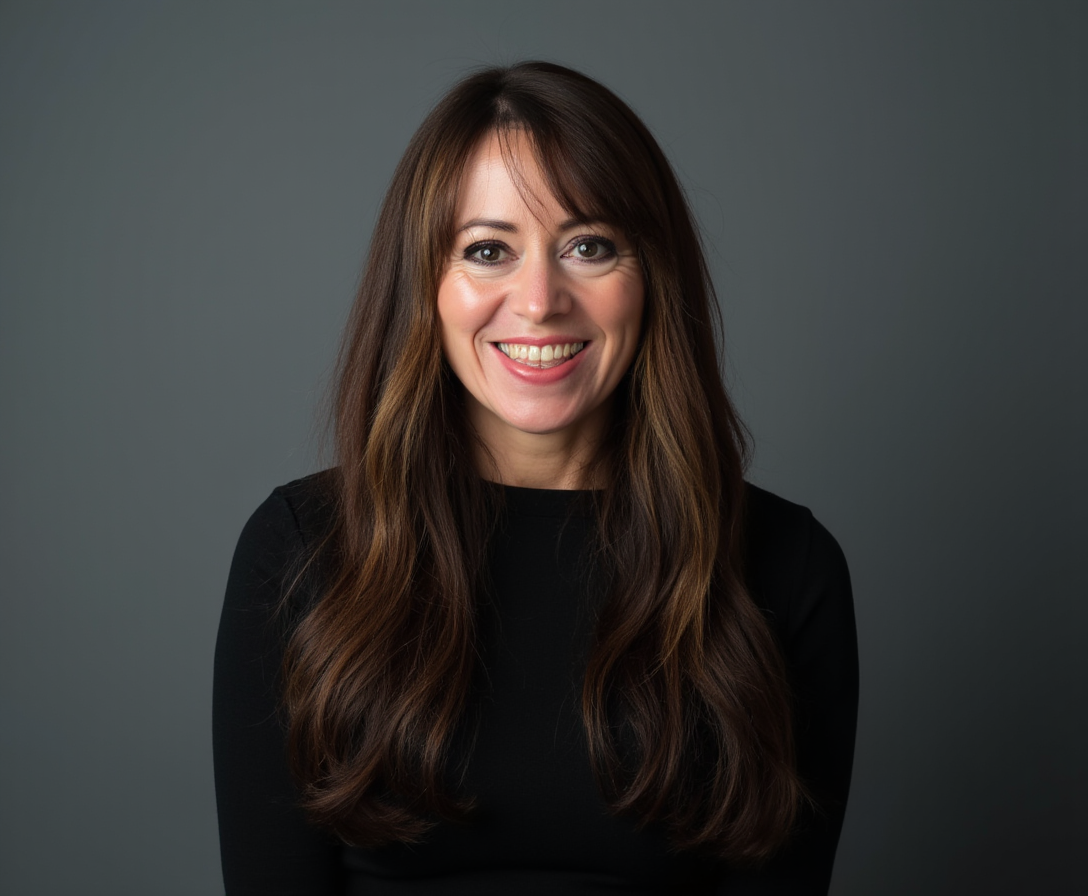
Building a client-first culture: Insights from Evie Freeman in Air magazine
The June 2025 issue of Air magazine features a dedicated interview with Gama Aviation’s Group Director of Client Experience, Evie Freeman, highlighting the Group’s strategy and leadership in delivering exceptional client journeys.
Air magazine is an internationally recognised luxury lifestyle and business aviation publication. Read by a global audience of private jet owners, operators, charter clients, family offices, corporate flight departments, and industry professionals, the magazine combines editorial coverage of high-end aviation services with insights into luxury lifestyle trends. Its presence at major industry events and broad distribution across FBO networks make Air a valued reference point for discerning business aviation clients and service providers.
Evie’s appointment to the newly created role of Group Director of Client Experience in 2024 underlines Gama Aviation’s commitment to building a fully client-centric culture across its global operations. In this interview, she shares her perspective on what defines a truly exceptional client experience in business aviation, how Gama Aviation is setting new standards, and how the Group is preparing for evolving client expectations.
We are pleased to share the full interview below, as published in Air magazine:
What are the key elements that differentiate a truly exceptional FBO experience from a standard one?
A truly exceptional FBO experience goes far beyond what’s visible at the front of house. While premium lounges, attentive service, and well-executed ground handling are vital, it’s the culture behind the scenes – the embedded mindset of putting the client at the centre – that truly sets it apart.
At Gama Aviation, we’re on a journey towards becoming a fully client-centric organisation. That means building a culture that places the client at the heart of every decision, process, and service – not just within our FBOs, but across all parts of the business. From our operational teams to our strategic functions, everyone has a role to play in delivering a seamless, intuitive experience.
So when we talk about anticipation, consistency, and personalisation, we’re not just referring to FBO amenities – we’re talking about a group-wide commitment to making it easy for clients to do business with us. That’s the difference between transactional service and a truly exceptional experience.
Personalisation is often at the heart of luxury service. Can you share some of the unique ways your team goes above and beyond for clients?
Personalisation is more than a gesture – it’s a mindset that runs through the entire organisation. In business aviation, our clients are often managing intense schedules, so it’s our responsibility to reduce friction, anticipate needs, and create experiences that feel both seamless and personal.
While those visible service moments matter – the warm welcome, the right coffee, the small details remembered – what’s just as important is the infrastructure and culture that enables them. At Gama Aviation, personalisation isn’t the responsibility of one individual or location: it’s a shared commitment supported by training, systems, and leadership across the group.
One small example: a client once mentioned a fondness for a particular local delicacy during casual conversation. When they returned, it was waiting for them in the lounge – a gesture that came from our team remembering, caring, and having the autonomy to act on it. That story might start at the FBO, but it reflects something deeper – the alignment between our front-line teams and our broader strategy of client-centricity.
We’re working hard behind the scenes to build a culture where personalisation is second nature – not just in the amenities we offer, but in how we think, plan, and deliver every step of the client journey.
How do you balance luxury, efficiency, and the personal touch when designing the client journey at your FBOs?
Balancing luxury, efficiency, and a personal touch begins with empathy – truly seeing the journey through the eyes of our clients. At Gama Aviation, we’ve adopted a service design approach that maps every stage of the experience, from kerbside arrival to take-off, with one guiding question: how can we make this easier and better for the client?
Luxury doesn’t always mean opulence – it means considered, seamless experiences where every detail is purposeful. Efficiency is critical in aviation, but it should never feel transactional. And the personal touch must feel genuine – never forced or overly scripted.
Behind the scenes, we’re building the structure to support this. Our service standards are supported by strong cross-functional processes, and our teams are empowered to make decisions that serve the client in the moment. This culture of flexibility and responsiveness is what brings our strategy to life.
We’re proud that this work isn’t confined to one department – it’s becoming part of the DNA of our entire organisation.
Can you share an example of a particularly memorable or challenging client request that your team successfully managed?
A defining moment for me – and a story I often reflect on when speaking about our client experience culture – happened during my early years working at our FBO in Gatwick. It was the week of 9/11, and one of our New York-based captains was grounded with her crew, unable to return home for several days. The situation was tense and emotional, with all of them understandably worried about family and colleagues back in the US.
Our team made a conscious decision to create a sense of connection and care. Rather than leaving them isolated, we opened up the lounge for shared time together each day, and in the evenings, took turns hosting the crew in our homes for dinner with our families. It wasn’t part of a checklist. It was a human response, and one rooted in empathy.
Years later, that same captain recognised me while visiting one of our facilities and recalled the experience in vivid detail. It had clearly stayed with her, not because of anything extravagant, but because of how we made her feel.
That memory stays with me as we build our client experience strategy at Gama Aviation. It’s not about grand gestures – it’s about the culture we create and the intent behind everything we do. And that applies across every part of our business, not just our FBOs.
What trends do you see shaping the future of client experience in business aviation, and how are you preparing for them?
The future of client experience in business aviation will be shaped by smarter technology, deeper personalisation, and a greater demand for seamless, sustainable operations. But at the heart of all this is something more fundamental: clients want to feel seen, valued, and understood – not just once, but every time they engage with us.
At Gama Aviation, we’re aligning our entire organisation around this principle. Our client experience strategy is grounded in our core values and designed to evolve with changing expectations. Whether that’s investing in more intuitive systems, embedding sustainable practices into our Business Aviation Centre, or redesigning workflows to reduce complexity, every initiative is guided by the question: What does this mean for the client?
We’re also investing in culture, ensuring every department, whether strategic or operational, sees their role in delivering exceptional experiences. That’s how we’re preparing for the future: not just by predicting trends, but by building an organisation that’s agile, client-focused, and proud to serve.
What sets Gama Aviation’s approach to client experience apart from other FBO operators?
Our approach is different because we’re building something bigger than a service standard – we’re building a culture. Client experience at Gama Aviation is not a frontline initiative; it’s a group-wide transformation that touches every department and every role.
We’ve structured our organisation around the belief that everyone contributes to the client journey – whether they’re facing the client directly or supporting the teams that do. This cross-functional alignment is what makes our approach sustainable and scalable.
And it’s not just philosophy – it’s practice. We’ve embedded this thinking into our strategy, training, and operations. My role, as Group Director of Client Experience, is designed to bridge functions and geographies so that no matter where a client engages with us, they feel the same level of care, competence, and commitment.
This isn’t just about standing out in the FBO space – it’s about building enduring relationships by doing the hard work behind the scenes to make excellence feel easy.
How does Gama Aviation ensure a consistently high standard of service across its global network of FBOs?
Consistency is the result of a connected culture – one where every team, at every location, understands and delivers on the same promise. At Gama Aviation, we achieve this by embedding our values into everything from recruitment and onboarding to operations and leadership development.
Our client experience strategy is supported by clear service standards, real-time feedback loops, and proactive site engagement. But most importantly, it’s supported by people – empowered, well-trained, and aligned behind a shared goal of excellence.
We also recognise that consistency doesn’t mean sameness. Every region we operate in has its own nuances, and we respect that. Our teams are trusted to adapt their approach while staying true to our values. That combination of structure and autonomy is what allows us to deliver high standards, time after time.
Ultimately, consistency isn’t an output – it’s a mindset. And we’ve built a culture that lives and breathes it.
Evie’s insights in Air magazine offer a valuable perspective on how Gama Aviation is evolving its client experience strategy — not just within its FBOs, but across every part of the Group’s operations. As the business aviation landscape continues to evolve, Gama Aviation remains committed to building meaningful, lasting relationships with its clients through seamless, intuitive, and consistently high-quality experiences.
You can read the full article in the June 2025 issue of Air magazine by clicking here

